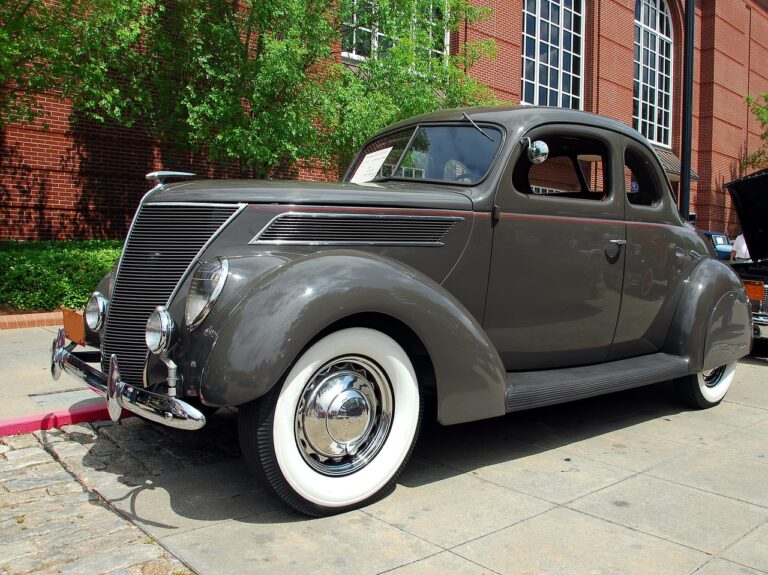Understanding the Aerodynamics of Brake Systems for Performance Enhancement
betbhai.com sign up, playexch in live login, gold365 login:Understanding the Aerodynamics of Brake Systems for Performance Enhancement
Have you ever wondered how the aerodynamics of a car’s brake system can impact its overall performance? The brake system is a crucial component of any vehicle, as it is responsible for slowing down or stopping the car when necessary. However, many people overlook the importance of aerodynamics when it comes to the brake system.
In this article, we will delve into the world of aerodynamics and how it can be used to enhance the performance of a car’s brake system. From the design of the brake calipers to the shape of the brake rotors, every aspect of the brake system plays a role in how efficiently it can slow down a car. Let’s explore how aerodynamics can make a difference in the performance of your vehicle’s brakes.
The Role of Aerodynamics in Brake System Design
The aerodynamics of a car’s brake system can have a significant impact on its performance. When a car is in motion, air flows over and around the vehicle, creating drag and slowing it down. The same principle applies to the brake system – the design of the components can either enhance or hinder the flow of air, affecting how efficiently the brakes can slow down the car.
The shape of the brake calipers, for example, can impact the aerodynamics of the system. Calipers that are designed with smooth, streamlined shapes can help reduce drag and improve airflow, allowing for better cooling of the brake system. This, in turn, can prevent overheating of the brakes and improve their performance over time.
Similarly, the design of the brake rotors can also play a role in the aerodynamics of the brake system. Rotors that are designed with fins or slots can help direct airflow through the system, allowing for better cooling and improved performance. By optimizing the design of these components, car manufacturers can enhance the overall aerodynamics of the brake system and improve the performance of the vehicle.
Brake Ducts and Airflow Management
In addition to the design of the brake components themselves, brake ducts are another important aspect of aerodynamics in the brake system. Brake ducts are channels that are used to direct airflow to the brake components, helping to cool them down and improve their performance. By allowing air to flow through the system more efficiently, brake ducts can help prevent overheating of the brakes and ensure they function properly under high-stress conditions.
Proper airflow management is crucial for maximizing the performance of the brake system. Without adequate cooling, the brakes can overheat, leading to reduced stopping power and potential damage to the components. By incorporating brake ducts into the design of the vehicle, car manufacturers can ensure that the brakes receive sufficient airflow to keep them cool and optimize their performance.
The Importance of Brake System Aerodynamics for Performance Enhancement
So why is it important to consider the aerodynamics of the brake system when looking to enhance the performance of a vehicle? The answer lies in the relationship between aerodynamics and efficiency. By optimizing the design of the brake components to improve airflow and reduce drag, car manufacturers can enhance the overall performance of the brake system and improve the driving experience for the consumer.
Aerodynamics plays a crucial role in how efficiently a car can slow down or stop. By improving the airflow through the brake system, manufacturers can ensure that the brakes operate at their optimal performance level, providing better stopping power and control for the driver. This can be particularly important in high-performance vehicles, where precision and responsiveness are key factors in the overall driving experience.
Incorporating aerodynamic principles into the design of the brake system can also help to extend the lifespan of the components. By allowing for better cooling of the brakes, manufacturers can prevent overheating and reduce wear and tear on the components, leading to a longer-lasting and more reliable brake system overall. This can ultimately save consumers money on maintenance and repairs down the line.
FAQs
1. What role does aerodynamics play in the performance of a car’s brake system?
Aerodynamics in the brake system can impact the flow of air through the components, improving cooling and overall performance.
2. How can brake ducts help enhance the aerodynamics of the brake system?
Brake ducts help direct airflow to the brake components, preventing overheating and optimizing performance.
3. Why is it important to consider aerodynamics when designing a car’s brake system?
Aerodynamics can improve efficiency, cooling, and overall performance of the brake system, providing better stopping power and control for the driver.
In conclusion, the aerodynamics of a car’s brake system can have a significant impact on its performance. By optimizing the design of the brake components and incorporating proper airflow management, car manufacturers can enhance the overall efficiency and reliability of the brake system. For consumers, this can mean better stopping power, improved control, and a more enjoyable driving experience overall. So next time you hit the brakes, remember the role of aerodynamics in making that smooth and responsive stop possible.







